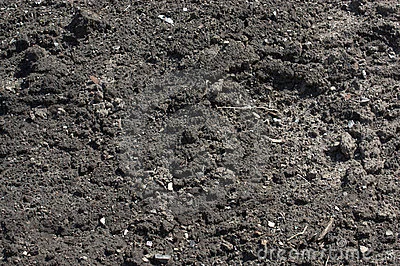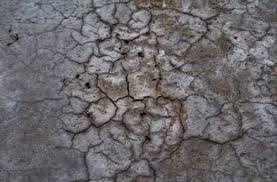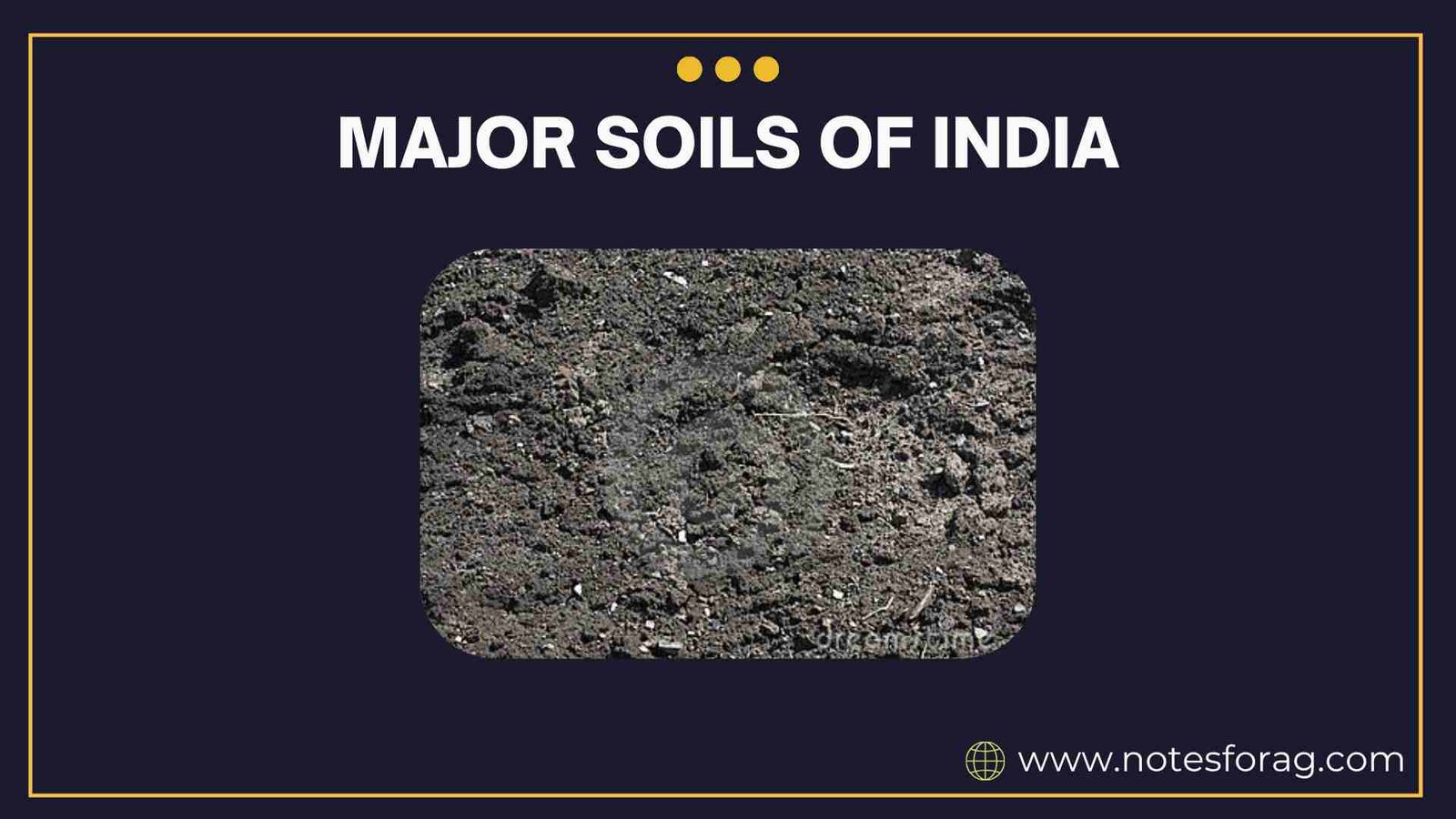INTRODUCTION TO SOILS OF INDIA
India is a vast country with diverse topography, climate, and vegetation, leading to the formation of different types of soils across its regions. Soil is the uppermost layer of the earth’s crust, crucial for agriculture, forestry, and sustaining life. The fertility, color, texture, and depth of soil determine the types of crops grown and the agricultural practices used. Understanding the major soils of India is essential for sustainable land use and efficient crop management.
Summary of Soils of India
- India features eight major soil types Alluvial, Black, Red, Laterite, Desert, Forest, Peaty & Marshy, and Saline/Alkaline each with unique textures, fertility levels, and regional presence.
- Alluvial soils support cereal crops; Black soils retain moisture for cotton; Red and Laterite need nutrient boosts for crops like tea and cashew, while Desert and saline soils require proper treatment for cultivation.
- With over 40% of Indian land facing degradation, conservation practices like contour ploughing, afforestation, cover cropping, terracing, and water harvesting are essential for restoring and preserving soil health.
Table of Contents
FACTORS AFFECTING SOIL FORMATION IN INDIA
Several factors influence soil formation in India:
- Climate – Temperature and rainfall affect the weathering of rocks and organic matter decomposition.
- Parent Material – The underlying rock material provides minerals and texture to the soil.
- Topography – Slope and elevation affect water drainage and erosion.
- Time – Soil takes thousands of years to form and mature.
- Biological Activity – Organisms contribute to humus formation and nutrient cycling.
MAJOR TYPES OF SOILS IN INDIA
Alluvial Soil
Alluvial soil is the most widespread and agriculturally important soil in India. It is mainly found in the northern plains and river basins of the Ganges, Brahmaputra, and Indus.
- Origin – Formed by the deposition of sediments by rivers.
- Texture – Sandy to silty loam; deep and fertile.
- Color – Light grey to ash grey.
- Fertility – Rich in potash and lime; deficient in nitrogen and phosphorous.
- Crops Grown – Wheat, rice, sugarcane, cotton, jute, pulses.
- Regions – Uttar Pradesh, Bihar, West Bengal, Punjab, Haryana, Assam, parts of Odisha.
Black Soil (Regur Soil)

Also called Regur soil, black soil is known for its moisture-retaining capacity and is suitable for dry farming.
- Origin – Derived from basalt rocks through weathering.
- Texture – Clayey, deep, and sticky when wet.
- Color – Deep black to greyish black.
- Fertility – High in lime, iron, magnesium, and aluminum; low in nitrogen and phosphorus.
- Crops Grown – Cotton, soybeans, millets, sorghum, pulses, oilseeds.
- Regions – Maharashtra, Madhya Pradesh, Gujarat, Andhra Pradesh, Karnataka, Tamil Nadu.
Red Soil
Red soil derives its name from its reddish color due to the presence of iron oxide.
- Origin – Formed from igneous and metamorphic rocks.
- Texture – Sandy to loamy; porous and friable.
- Color – Red to yellowish-red.
- Fertility – Poor in nitrogen, phosphorus, and humus; responds well to fertilizers.
- Crops Grown – Groundnut, millets, potatoes, pulses, fruits.
- Regions – Tamil Nadu, Karnataka, Odisha, Chhattisgarh, parts of Maharashtra and Andhra Pradesh.
Laterite Soil

Laterite soils are heavily leached soils found in areas with high rainfall and temperature.
- Origin – Formed through intense leaching and weathering in hot and wet tropical areas.
- Texture – Porous, crumbly, and coarse.
- Color – Reddish-brown due to iron and aluminum content.
- Fertility – Low in fertility due to leaching; needs organic and chemical fertilization.
- Crops Grown – Tea, coffee, cashew nuts, coconut, rubber.
- Regions – Western Ghats, Kerala, parts of Odisha, West Bengal, Assam.
Arid or Desert Soil
Found in dry regions of northwestern India, these soils are sandy and low in organic matter.
- Origin – Formed under arid and semi-arid climate with scanty vegetation.
- Texture – Sandy to gravelly.
- Color – Light brown to yellowish-brown.
- Fertility – Low moisture and organic content; alkaline in nature.
- Crops Grown – Bajra, pulses, guar, millet with irrigation.
- Regions – Rajasthan, Gujarat, parts of Haryana and Punjab.
Forest and Mountain Soils
These soils are found in hilly and mountainous regions and are influenced by forest vegetation.
- Origin – Formed from sedimentary rocks under forest cover.
- Texture – Loamy and silty; shallow and acidic in higher altitudes.
- Color – Varies with altitude and vegetation.
- Fertility – Rich in organic matter but may lack lime and phosphates.
- Crops Grown – Tea, spices, fruits, temperate vegetables.
- Regions – Himalayan region, Western and Eastern Ghats.
Saline and Alkaline Soils

These soils have high salt content and are unsuitable for most crops without treatment.
- Origin – Poor drainage, excessive irrigation, capillary rise.
- Texture – Sandy to loamy.
- Color – Grey to white.
- Fertility – Poor due to high pH and salt content.
- Crops Grown – Salt-tolerant crops like barley, cotton, rice with proper management.
- Regions – Parts of Gujarat, Punjab, Uttar Pradesh, West Bengal, Rajasthan.
Peaty and Marshy Soils
Rich in organic matter but deficient in potash and phosphate, these soils are often waterlogged.
- Origin – Accumulation of organic matter in humid, swampy areas.
- Texture – Rich in humus; sticky and black.
- Color – Dark black or brown.
- Fertility – High in organic content but acidic.
- Crops Grown – Paddy, jute.
- Regions – Kerala, parts of West Bengal, Odisha, coastal plains.
SOIL CONSERVATION METHODS IN INDIA
To prevent soil degradation and maintain productivity, several soil conservation methods are used:
- Contour Ploughing – Ploughing along the contour lines to reduce runoff.
- Terracing – Creating terraces in hilly areas to prevent soil erosion.
- Cover Cropping – Growing cover crops to protect soil from erosion and improve fertility.
- Afforestation – Planting trees to bind the soil and prevent erosion.
- Check Dams and Bunds – Preventing water runoff and soil wash.
CONCLUSION
The diverse soils of India reflect its complex geography and climatic patterns. From the fertile alluvial soils of the plains to the rugged mountain soils, each type has specific characteristics and suitability for certain crops. Sustainable soil management practices and scientific interventions are necessary to enhance fertility, prevent degradation, and ensure food security. Awareness about soil types and their conservation helps in better agricultural planning, environmental protection, and economic development. By recognizing the value of soils as a vital resource, India can achieve long-term agricultural sustainability and rural prosperity.
Frequently Asked Questions (FAQs)
Why is soil conservation needed in India?
Soil conservation is very important because more than 40% of land in India is getting damaged. Problems like soil erosion, salinity, acidity, and overuse of chemicals are reducing soil fertility and harming both farming and the environment. If we don’t protect our soil, farmers will face lower crop yields, and natural ecosystems will also suffer. Conservation methods like tree planting, proper irrigation, and using organic fertilizers can help save our soil for future generations.
Which soil is best for agriculture in India?
Alluvial soil is considered the best for farming in India. It is mostly found in the Indo-Gangetic plains across northern and eastern India. This soil is very fertile and full of nutrients, making it ideal for growing important crops like wheat, rice, sugarcane, and pulses. It also has a good texture, which helps in retaining moisture and supporting strong root growth.
What are the major types of soils in India?
India has eight main types of soils: Alluvial, Black, Red, Laterite, Desert, Forest, Peaty & Marshy, and Saline/Alkaline soils.
Each type is different in how it looks, where it is found, and what crops it can grow. For example, Alluvial soil is found in river plains and is very fertile, while Black soil holds moisture well and is great for cotton. Red and Laterite soils are found in hilly or dry areas and may need extra nutrients. Desert, Saline, and Marshy soils often need special care before crops can grow in them.
Related Articles

